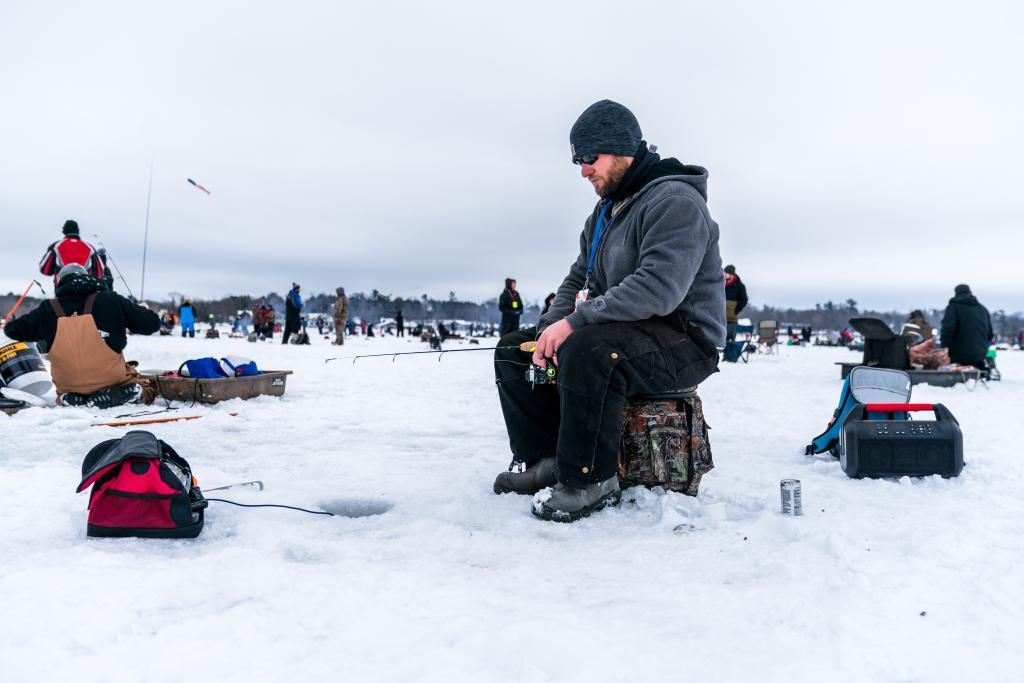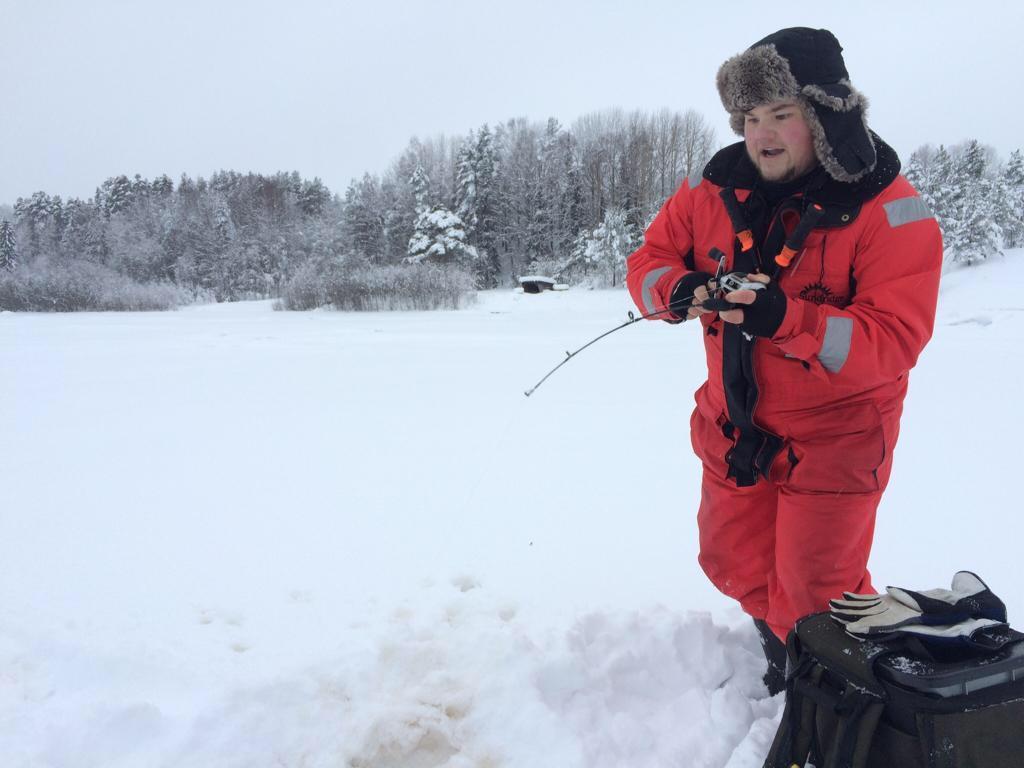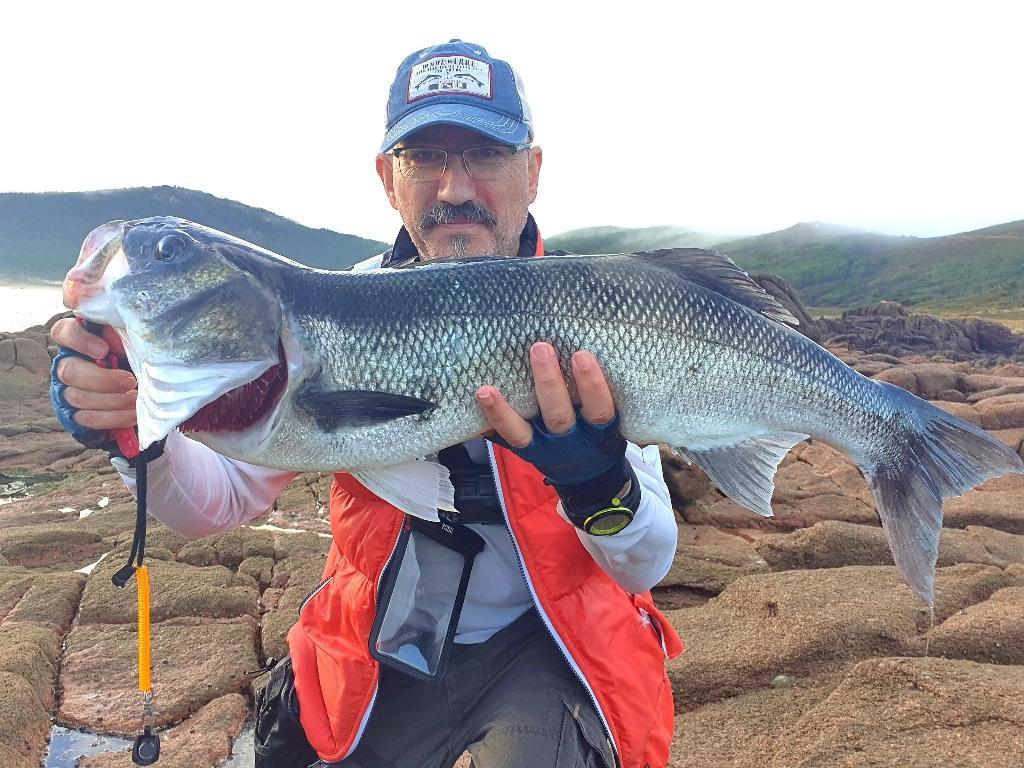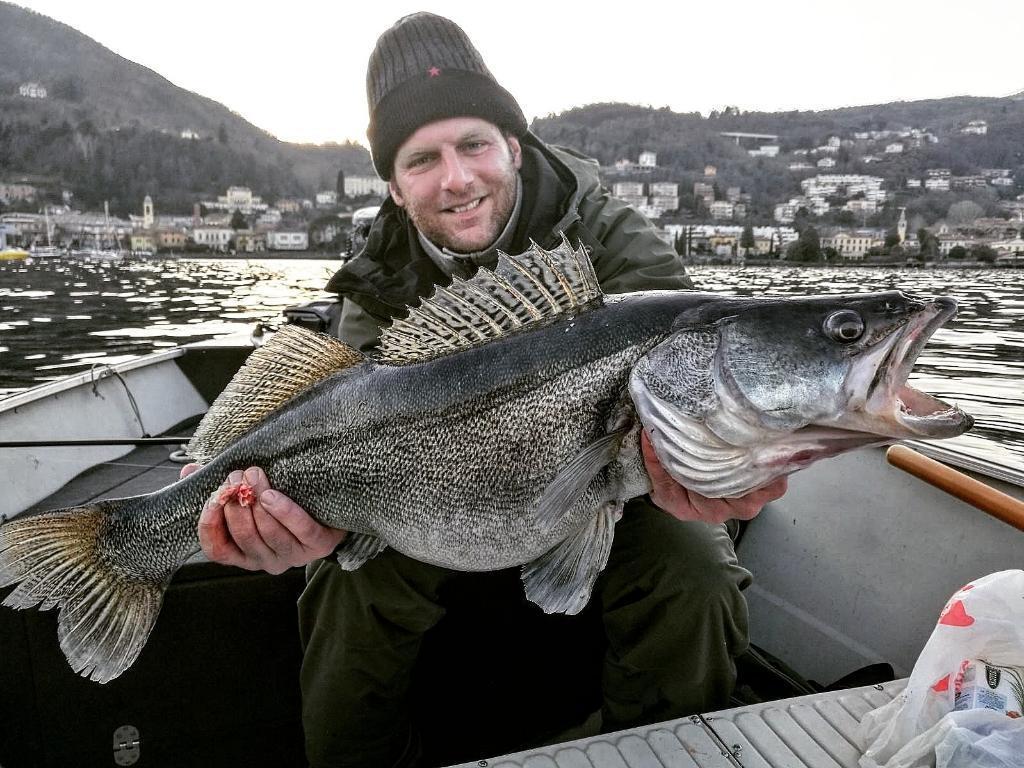This northern passtime sounds a bit crazy for those anglers from warmer countries. Walking out into freezing temperatures in the middle of nowhere, digging a hole in the ice and waiting for hours to catch a fish is definitely different from fly-fishing in a river or catfishing from a boat in the springtime. Fish behave differently, the gear you need is different as well as your mindset.
Fish also feel the cold

Fish behavior in freezing lakes changes and with that our approach to fishing must adapt as well. Fish are cold-blooded, which means that as temperatures go down, their bodies cool down and their metabolism progressively slows down as well. They begin to move less, and they tend not to eat enough. One has to approach fishing with more patience and different methods.
When a layer of ice forms on top of a body of water it provides some insulation that helps keep some heat underneath, causing warm water to sink down. This makes fish gather in groups near the bottom where the warmer layer of water is. Some other fishes even burrow themselves in the soft sediments and hibernate.
With these changes in their behavior we also have to change our techniques in order to reach the bottom, catch their attention in their sleepy state and lure them slowly. We also have to be even more patient!
Explore some jigging variations

Given that ice-fishing is done through a relatively small hole in the ice surface, jigging is one of the most popular techniques used for it. Having a jig allows for the angler to play with a jerky and vertical motion to catch the fish's attention and quickly pull them out as soon as they bite. This technique is particularly good for slow moving fish, and given its weighted lures it can reach the bottom where fish hangout in the winter time.
When heading to the ice-covered lakes for a good fishing session, you might want to bring some vertical and horizontal jigs. It’s good to see what fish are responding to and changing them as you see fit. Also make sure to bring colorful jigs because these will get more attention from these slow moving fish. Bring a number of different jigs, different sizes, weights, and colors so you can test and see what fish are responding to.
Twist it, jerk it and move it all around

You might begin your fishing session with jerking movements that get you a few fish, but then they stop going for it. Sometimes you need to change it up and bring something new to catch their attention once again. Given that you are fishing through a small whole, most anglers’ tendency will be to do up and down movements, but there are some small movements that can make a big difference.
For example line-twisting. By taking the line between your thumb and middle finger and gently twisting it without changing the depth of the jig you can get fish to look back and finally bite. You can also try moving it around the whole in the ice in small circles, once again without moving it up or down. This is especially good in shallow waters.
Try some chumming to wake up and attract the fish
Given the sleepy nature of fish in cold temperatures, sometimes you just need some chum to wake them up and get them feeding more aggressively. This will not only make them more active, but will also attract more fish to your area. If you are not alone in the lake it might not be such a good idea as this will give you an advantage over other anglers who might not like it so much.
Don’t be afraid to touch the bottom
 As we mentioned before, in the winter time fish tend to stay close to the bottom where water temperatures are a bit higher. With this in mind, using the bottom to create some sound and small clouds of debris can make a big difference. This trick works with Perch, among other species which feed very close to the bottom.
As we mentioned before, in the winter time fish tend to stay close to the bottom where water temperatures are a bit higher. With this in mind, using the bottom to create some sound and small clouds of debris can make a big difference. This trick works with Perch, among other species which feed very close to the bottom.
It might also work to simply let the jig hit the bottom and rest there until a curious fish catches it. To take this passive approach we recommend you to have a spring bobber to quickly detect when a fish bites.
Pick the right lake and the right spot

First you have to choose between fishing in a small or large lake. The advantage of smaller lakes is that there are not that many deep spots, so fish usually concentrate in one spot where warmer temperatures are. These tend to be good spots to go when the lake has just freezed. However, smaller lakes tend to have an oxygen problem as winter passes. This causes fish to be much tired and less interested in biting.
Then there are large lakes with so many drops and so much more area to cover, that it is much harder to find the fish. However, not impossible! Larger lakes are better later in winter as they have less of an oxygen problem, so fish are a bit more active. Some things you can do to find the right spots is look at maps of the lake and identify the drops. You can also avoid the crowds! Too much activity will put fish on guard and make them less likely to come your way and bite.
Lastly, see all of these challenges of fishing as a fun game. Stay safe, warm and enjoy ice-fishing. If you have any more tips, photos or stories from your ice-fishing adventures don’t forget to share them with the Fishsurfing community.
Photos by: Ladislav Kiss, Ростислав Кучерявенко, Natali Sundkvist, Miranda Beijenberg on Pixabay, Wikimedia, Robest Westin, igrishkoff on Pixabay,












